Occupational safety training for manufacturing bank card reader machines
99,000 ₫
Note: The above price is calculated per person, and the price may fluctuate depending on the number of participants in the course and market movements. For more accurate pricing support, please refer to the price list or contact our consulting staff directly.
Occupational safety is an important issue in factories producing bank card reader machines and needs to be addressed promptly to ensure the health and safety of workers and enhance the reputation of businesses. The Occupational Safety Training course by An Toan Nam Viet is one of the effective solutions to raise awareness about preventing workplace accidents for workers involved in producing bank card reader machines.
Table of Contents
Toggle1. Overview of Bank Card Reader Machines
a. What is a Bank Card Reader Machine?
A bank card reader machine, abbreviated as POS (Point of Sale), is an electronic device used to accept payment via bank cards or credit cards from customers in shopping or service payment transactions.
POS machines typically have a touch screen or keypad for entering transaction information and confirming payments. They can read and process information from bank cards or credit cards, such as card number, expiration date, and security code. Then, the POS machine connects to the banking system or card company to verify the information and transfer money from the customer’s account to the seller’s account.
POS machines can be used in various industries and locations, including retail stores, restaurants, hotels, cafes, supermarkets, and other points of sale. They enhance convenience and transaction speed while minimizing the need for cash and paperwork during payment.

b. Machinery Used in Producing Bank Card Reader Machines
The manufacturing and assembly process of bank card reader machines (POS) often involves various types of machinery and equipment. Below are some commonly used machines in this process:
- Metal processing machines: Used to produce metal parts of POS machines, such as casing and impact-resistant frames. Metal processing machines like cutting machines, milling machines, lathes, and metal presses can be used. These machines help cut, bend, drill, and process metal parts according to design requirements.
- Plastic molding and injection machines: Some POS parts can be made from plastic. Plastic molding or injection machines are used to create plastic parts such as covers, casing, or buttons of POS machines.
- Metal pressing and welding equipment: To attach metal parts together or to plastic parts, metal presses or welding equipment may be used. They create strong and durable connections between POS components.
- Component loading machines: POS assembly often involves loading components and parts into precise positions. Automated component loaders ensure accuracy and efficiency during this process.
- Testing and quality inspection machines: To ensure POS machines operate correctly and reliably, testing and quality inspection machines may be used. They detect errors, check functions, and confirm the POS machine meets quality standards.
- Printing and labeling machines: Finally, after full assembly, printing and labeling machines are used to print and attach product information, brand, or instructions on the machine surface.

c. Companies Producing Bank Card Reader Machines in Viet Nam
Below are some companies producing bank card reader machines in Viet Nam:
- MPOS Technology JSC: MPOS Technology is a technology company in Viet Nam specializing in producing and distributing mobile payment devices, including mobile card reader machines.
- PAX Technology Viet Nam Co., Ltd: PAX Technology Viet Nam is a subsidiary of PAX Technology Limited, one of the world’s leading providers of electronic payment solutions and card reader machines.
- New POS Technology JSC: New POS Technology is a company specializing in producing and distributing payment devices, including card reader machines, receipt printers, and other electronic payment solutions.
- ICT Enterprise One Member Co., Ltd: ICT Enterprise specializes in producing card reader machines and other electronic payment devices. The company supplies products to many banks and financial institutions in Viet Nam.
- Rong Viet Securities Corporation (RongVietSec): RongVietSec is a securities company in Viet Nam but also produces bank card reader machines and other electronic payment devices to serve customer transaction needs.
Note that this list is only a few examples, and there may be many other companies in Viet Nam producing bank card reader machines.

d. Specific Jobs in a Bank Card Reader Machine Manufacturing Plant
Group 1
- Executive director, deputy executive director, department heads in a bank card reader machine manufacturing plant.
Group 2
- Safety officer: manages safety in the plant, designs safety procedures, supervises and encourages employees to comply with safe working procedures.
Group 3
- Component manufacturing: Necessary components and parts for card reader machines are produced in the factory or ordered from other suppliers. Tasks include metal processing, printed circuit board production, plastic molding, aluminum casting, and other work to create the required parts.
- Assembly: Parts and components are then assembled to form complete card reader machines. This work includes assembling frames, electronic circuits, screens, keypads, card readers, and other accessories according to assembly procedures and instructions.
- Testing and quality inspection: Each card reader machine after assembly undergoes testing and quality inspection. Steps include checking machine functionality, ensuring components operate correctly, and verifying payment features.
- Packing and boxing: After quality checks, the card reader machines are packed and boxed for shipment. Packaging ensures products are protected and reliable during transportation.
- Transportation and distribution: After packing, machines are shipped to distributors or end customers.
Group 4
- Office, service, sales, and marketing jobs.
- Production management, quality management, human resources, material management, and finance/accounting management.
- Design and research: This work focuses on researching, developing, and designing models and technical drawings of card reader machines. Engineers and research teams review functional and design requirements to ensure products meet industry standards.
2. Overview of Occupational Safety Training for Bank Card Reader Machine Production
In this article, we focus on issues related to Group 3 because Group 3 directly participates in the production process and bears the highest occupational safety risks. Refer to other groups here
a. What is Group 3 Occupational Safety Training?
- Group 3 occupational safety training consists of sessions that equip workers with awareness on preventing workplace accidents.
- Occupational safety training helps workers recognize and avoid hazards, minimizing risks of accidents while working.
REGISTER FOR OCCUPATIONAL SAFETY TRAINING SERVICE
b. Training Duration
Initial occupational safety training duration
- Total training time is at least 24 hours, including testing time.
- 8 hours theory on occupational safety policies and laws
- 8 hours theory on basic occupational safety knowledge
- 4 hours theory on specialized training content
- 2 hours practical on specialized training content
- 2 hours final theory test
The training center divides the time into multiple sessions depending on employee scheduling. Typically, there are 6 sessions over 3 days if the company can schedule continuous training.
Periodic occupational safety training
- Before the occupational safety card expires, employees who want reissuance must undergo periodic occupational safety training with a duration of at least 50% of the initial training time.
Explanation: Total periodic training time is at least 12 hours, including testing. After completing the periodic training and passing the test, workers are reissued or extended the occupational safety card.
c. Training Content
| No. | TRAINING CONTENT | TRAINING DURATION (HOURS) | |||
| Total | Including | ||||
| Theory | Practical | Test | |||
| I | Occupational safety policies and laws | 8 | 8 | 0 | 0 |
| 1 | Overview of legal documents system on occupational safety and hygiene. | 6 | 6 | ||
| 2 | Standards and technical regulations on occupational safety and hygiene. | 1 | 1 | ||
| 3 | Specific regulations of state management agencies on occupational safety when building, expanding, or renovating facilities for production, storage, maintenance, and inspection of machines, equipment, materials, and substances with strict safety requirements. | 1 | 1 | ||
| II | Basic knowledge on occupational safety | 8 | 8 | 0 | 0 |
| 1 | Basic knowledge about hazards and harmful factors in the workplace. | 4 | 4 | ||
| 2 | Methods to improve working conditions. | 1 | 1 | ||
| 3 | Safety culture in production and business. | 1 | 1 | ||
| 4 | Rights and obligations of employers and employees; policies and regimes on occupational safety; functions and responsibilities of safety officers. | 1 | 1 | ||
| 5 | Occupational safety rules, signs, instructions, use of safety equipment and personal protective equipment; first aid skills and occupational disease prevention. | 1 | 1 | ||
| III | Specialized training content | 6 | 4 | 2 | 0 |
| Comprehensive knowledge of machines, equipment, hazardous substances; risk analysis, management, safe working procedures for machines, equipment, and hazardous substances. | 6 | 4 | 2 | ||
| IV | Final safety training test | 2 | 2 | 0 | 0 |
| Total | 24 | 22 | 2 | ||
See more training content of the 6 groups
d. Occupational Safety Card
After completing the occupational safety training and passing the test, workers will be issued a occupational safety card (commonly called Group 3 occupational safety certificate).
The Group 3 card includes information such as full name, date of birth, job, and specific working environment, along with training duration, red stamp, and signature confirming course completion.
According to Clause 2, Article 24 of Decree 44/2016/ND-CP, there are two cases:
- If the employer and employee have a labor contract, the employer must sign, stamp, and authenticate the occupational safety card after the employee completes the training and passes the test.
- If the worker is freelance or temporary without a labor contract, the training unit must sign, stamp, and authenticate the occupational safety card after the employee completes the training and passes the test.

3. Identifying Hazards Affecting Workers in Bank Card Reader Production
When producing bank card readers, there are some potential hazards that can affect workers. Below are the main hazards and how to identify them:
- Electrical safety hazards: Bank card readers operate on electricity and involve electrical circuits and electronic components. Risks such as short circuits, electric shocks, or other electrical issues may occur. Identifying this hazard includes checking and ensuring that electrical systems, circuits, and electronic components meet electrical safety standards.
- Hazards from toxic materials: During the production of card readers, materials such as chemicals, plastics, metals, and other substances may be used. Exposure to hazardous materials can harm workers’ health. Identifying this hazard includes ensuring the use of safe materials and complying with regulations on waste management and disposal.
- Occupational accident hazards: In the production process, tasks such as metal processing, assembly, and the use of machinery and tools may pose risks of accidents such as cuts, lacerations, crushing, impacts, or falls. Identifying this hazard includes ensuring the use of personal protective equipment (PPE) such as helmets, gloves, safety glasses, and safety training for workers.
- Noise and lighting hazards: Machinery and equipment may generate strong noise and lighting. Unsafe noise and lighting can harm workers’ hearing and vision.

4. Common Occupational Accidents for Workers in Bank Card Reader Production
Some common occupational accidents during bank card reader production include:
- Cut and laceration accidents: When working with cutting tools, metal processing, or assembling card reader parts, the risk of cuts and lacerations is very high. This can occur if safety procedures are not followed, protective equipment is not used, or sharp materials are not handled carefully.
- Collision and injury from falling heavy objects: During transport, movement, and assembly of card readers, heavy parts may fall and cause accidents. Workers should pay attention and comply with transport regulations and safe working procedures to avoid collisions and injuries.
- Electrical accidents: When working with circuits, electronic components, and power sources, the risk of short circuits, electric shocks, and other electrical hazards is high. Workers should be trained in electrical safety, use protective equipment, and follow safety procedures to prevent electrical accidents.
- Machinery-related accidents: During the use of production machinery, the risk of crushing, impact, or entrapment is high. Workers should be trained on safe machinery operation, follow operational procedures, and use personal protective equipment to prevent accidents.
- Accidents during welding and spot welding: Welding processes may cause accidents such as fire, burns, or respiratory hazards. Workers should use protective equipment, follow safety procedures, and work in well-ventilated areas to ensure safety.
5. Safety Measures for Participating in Bank Card Reader Production
When participating in bank card reader production, there are several important safety measures that workers should follow. Below are basic safety measures:
- Occupational Safety Training and Guidance: Provide workers with training and guidance on safety rules and procedures when working in a card reader production factory. Ensure that all employees understand and comply with occupational safety regulations.
- Use of Personal Protective Equipment (PPE): Ensure that workers are provided with and correctly use PPE such as helmets, safety glasses, gloves, safety shoes, and protective clothing to guard against risks like cuts, impacts, chemicals, and dust.
- Hazardous material control: Ensure the safe use and handling of hazardous materials such as chemicals. Provide instructions and safety measures for the use, storage, and disposal of hazardous materials.
- Electrical risk management: Apply electrical safety measures to prevent short circuits, electric shocks, and fires. Ensure circuits, electrical devices, and systems comply with electrical safety standards.
- Tool and machinery management: Ensure that tools and machinery are used correctly and safely. Conduct regular maintenance, safety checks, and promptly repair faults and malfunctions.
- Organizing a safe workspace: Create a safe work environment by arranging workspace, cleaning the area, ensuring ventilation, and marking hazardous zones.
- Periodically conduct occupational environment monitoring in factories, collecting and analyzing harmful factors affecting workers, and adjusting to reduce hazards to prevent occupational diseases.
6. Benefits of Occupational Safety Training in Bank Card Reader Production
An Toan Nam Viet provides businesses with the following benefits after completing occupational safety training courses in accordance with Decree 44/2016/ND-CP on occupational safety and hygiene:
- Workers can identify potential occupational accident hazards and take preventive measures to avoid accidents.
- Businesses can establish risk prevention measures in production, operation, and maintenance processes.
- Reduce costs associated with potential workplace hazards.
- Continuous production without interruptions increases labor productivity and product quality.
- Compliance with labor safety laws reduces legal risks.
- Enhances credibility and professionalism, improving the business’s brand image.
Nam Viet’s training courses are designed to prevent external hazards from affecting individuals, enabling them to avoid injuries or, in severe cases, fatalities.
REGISTER FOR OCCUPATIONAL SAFETY TRAINING SERVICE
7. Customer Feedback After Completing Occupational Safety Training in Bank Card Reader Production
An Toan Nam Viet has many years of experience accompanying numerous businesses across Vietnam, especially in southern provinces. This responsibility is invaluable, and therefore our Occupational Safety Training has been increasingly professionalized. The growth of An Toan Nam Viet is driven by positive feedback and suggestions from businesses. Below are some testimonials from our clients.
See more customer interviews after using our services at An Toan Nam Viet
8. Occupational Safety Training Capacity of An Toan Nam Viet
An Toan Nam Viet is a reputable and quality center for occupational safety training in Vietnam. Training sessions are continuously conducted at factories, workshops, or construction sites across all 63 provinces.
REGISTER FOR OCCUPATIONAL SAFETY TRAINING SERVICE
Occupational Safety Training License
- An Toan Nam Viet has been inspected and certified by the Department of Safety under the Ministry of Labor – Invalids and Social Affairs, confirming our qualification to conduct occupational safety and hygiene training. This further strengthens our capability in occupational safety training.

Training Materials and Lectures
- Before being used in occupational safety training courses, training materials are reviewed to ensure knowledge accuracy and practical effectiveness.
- Instructor teaching methods follow Nam Viet’s standards, developed from expert research in occupational safety training to maximize knowledge absorption for learners.
Facilities
- Controlling classroom factors that affect training improves teaching efficiency and learning outcomes.
- Our training facilities provide spacious classrooms meeting standards for area, lighting, and equipment.
9. Nationwide Reputable Occupational Safety Training Center
At An Toan Nam Viet, we prioritize occupational safety training. Teaching workers how to protect themselves contributes to national development.
To ensure effective training, we meticulously prepare every detail—from tools, teaching equipment, curriculum, materials, sound, to lighting.
Our instructors are experts with years of experience, including research identifying workplace hazards across industries and preventive measures.
Lectures are practical, vivid, and easily understood by workers, helping them learn comfortably. Content strictly follows Decree 44/2016/ND-CP.
Workers learn preventive measures and self-protection and can apply them effectively in real work situations.
Our training center proudly provides professional occupational safety training with the following advantages:
- Competitive training costs with ensured quality.
- Flexible training schedules adapted to company production.
- Quick and lawful certification procedures.
- Experienced and professional instructors.
- Classrooms optimized for effective teaching and learning.
- Lectures tailored to occupational safety needs of enterprises.
- Dedicated, professional customer support.

10. Additional Resources for Occupational Safety Training in Bank Card Reader Production
- Occupational safety materials for bank card reader production
- Occupational Safety Training Materials
- Occupational Safety Training Tests
- Bank Card Reader Production Occupational Safety Training Curriculum
- Bank Card Reader Production Occupational Safety Quiz
1 review for Occupational safety training for manufacturing bank card reader machines
No comments yet

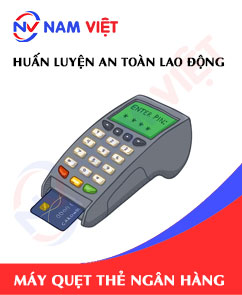
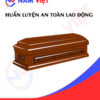
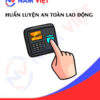



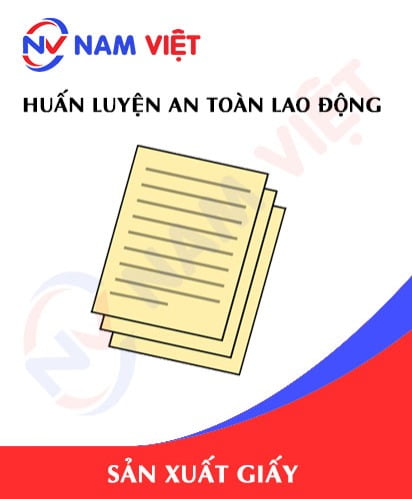



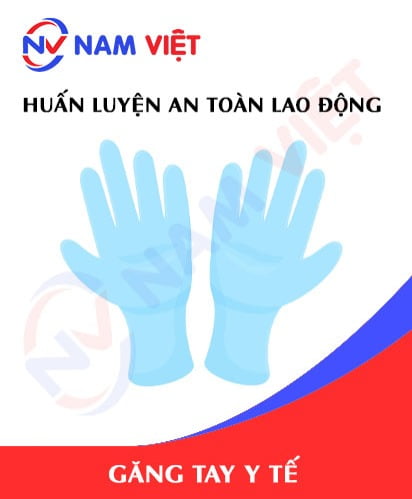



namchinh.haiphong341
Đơn vị an toàn lao động uy tín tại Việt Nam nhé!